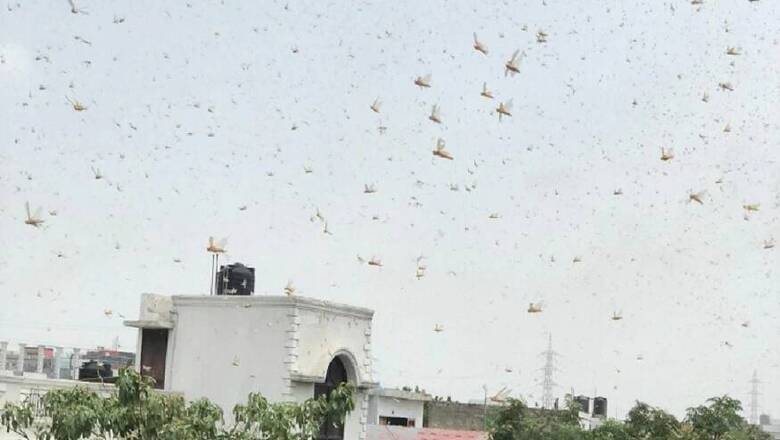
views
Desert locust swarms last seen across multiple northern states in May have once again begun migration from Rajasthan to Haryana and Uttar Pradesh.
On Saturday, Gurugram, Faridabad, Mahendragarh and Rewari districts in Haryana saw a large swarm estimated to be between 1-3 kilometre long flying through. The migrating insects, which lay eggs in the desert and migrate in millions, were expected to fly over northwest and north India during the end of June.
Keith Cressman, senior locust forecasting officer of the Food and Agriculture Organization (FAO), said in May the swarms had arrived in India earlier than their usual migration cycle. He had cautioned that more waves of migration will be seen in July as hopper bands from East Africa were expected to move northwards and cross over the Arabian Sea into Sindh, Rajasthan and Gujarat.
Owing to rainfall in Rajasthan last December and January this year, the desert locusts had an opportunity to breed well.
“In Rajasthan, the swarms have been coming in continuously for the past three weeks. Many of them are coming from Iran and Pakistan. Due to high metabolic activity, it has been difficult to kill them as they are not settling in one place for a long period,” said KL Gurjar, deputy director of the Locust Warning Organization and Directorate of Plant Protection, Quarantine and Storage.
The LWO office had been concerned that if swarms survive till monsoon, they would get another opportunity to breed.
Last week, the FAO had issued a situation update on locusts and said their breeding had ended in southern Iran and southwest Pakistan and their numbers were declining due to control operations and migrations to summer breeding areas in the Indo-Pakistan border. It had warned the swarms that will move eastwards from Rajasthan to other northern states will return to Rajasthan with the arrival of monsoon rains to lay eggs.
“Spring-bred adult groups and swarms continue to appear along the Indo-Pakistan border, many of which have continued further east into several states of northern India because the monsoon rains have not yet arrived in Rajasthan, India. These infestations are expected to return to Rajasthan with the onset of the rains to rapidly mature and lay eggs,” the FAO had said.
Professor Anil Kumar Chhangani, Head of the Department of Environment Science at Bikaner-based Maharaja Ganga Singh University said desert locust swarms bred in Rajasthan following good rainfall early this year and have moved to other states owing to low green cover.
“If they settle in urban areas for a little while, they will ravage the green cover, they will feast on it. Control operations will be needed in urban areas to control them quickly. They might come back to Rajasthan after monsoon showers begin because they are unlikely to find similar habitats in other states,” he said.
Locust swarms usually fly along with the prevailing winds and that is why the FAO has said swarms from Africa can be expected to migrate towards Rajasthan by crossing the Arabian Sea.
A desert locust adult can consume roughly its own weight in fresh food per day -- that is about two grams every day. A swarm of 1 square kilometre in size contains around 40 million locusts, which eat the same amount of food in a day as about 35,000 people. This is based on a person eating an average of 2.3 kg of food per day, according to the United States Department of Agriculture.




















Comments
0 comment